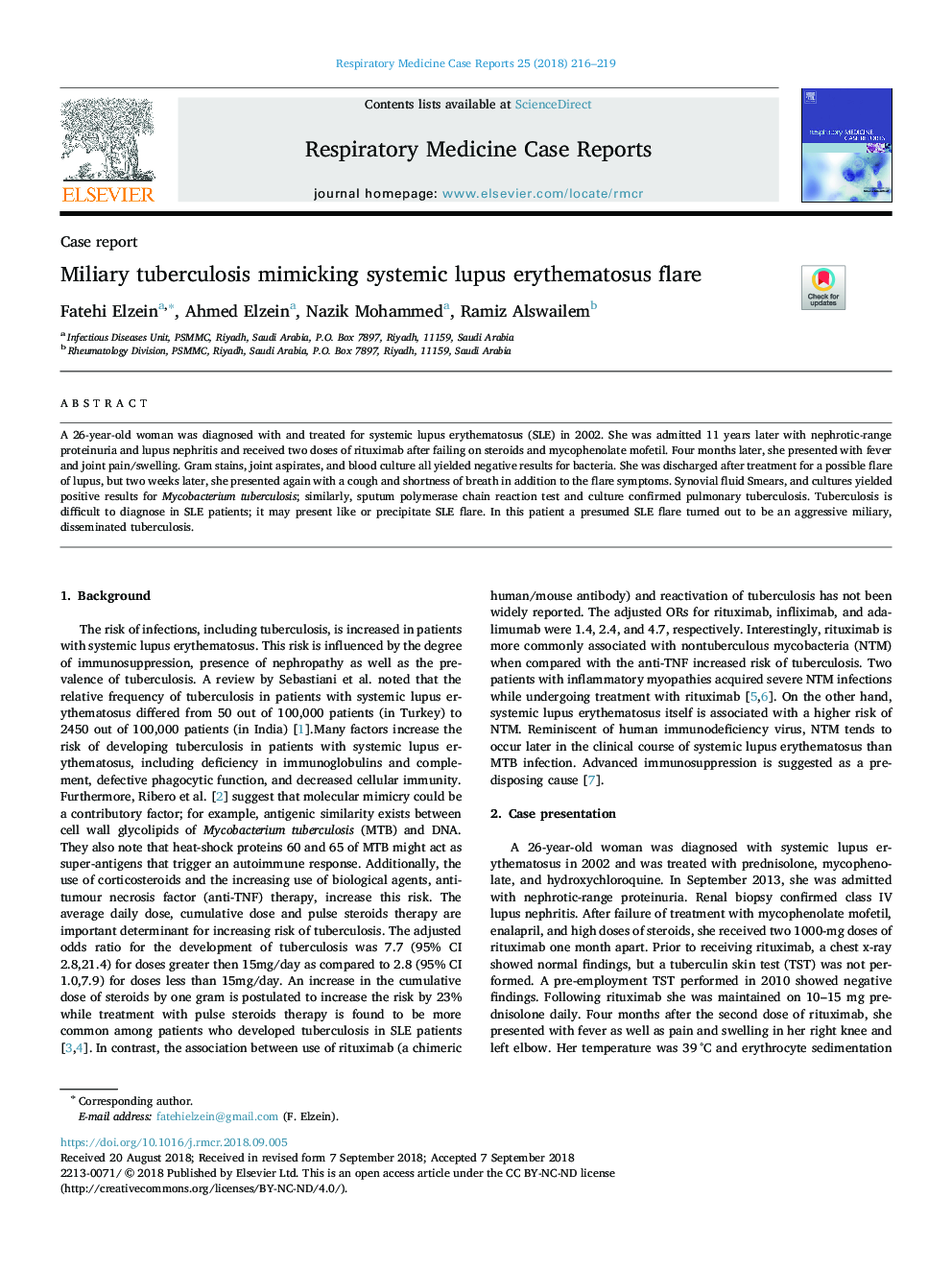| Article ID | Journal | Published Year | Pages | File Type |
|---|---|---|---|---|
| 10097301 | Respiratory Medicine Case Reports | 2018 | 4 Pages |
Abstract
A 26-year-old woman was diagnosed with and treated for systemic lupus erythematosus (SLE) in 2002. She was admitted 11 years later with nephrotic-range proteinuria and lupus nephritis and received two doses of rituximab after failing on steroids and mycophenolate mofetil. Four months later, she presented with fever and joint pain/swelling. Gram stains, joint aspirates, and blood culture all yielded negative results for bacteria. She was discharged after treatment for a possible flare of lupus, but two weeks later, she presented again with a cough and shortness of breath in addition to the flare symptoms. Synovial fluid Smears, and cultures yielded positive results for Mycobacterium tuberculosis; similarly, sputum polymerase chain reaction test and culture confirmed pulmonary tuberculosis. Tuberculosis is difficult to diagnose in SLE patients; it may present like or precipitate SLE flare. In this patient a presumed SLE flare turned out to be an aggressive miliary, disseminated tuberculosis.
Related Topics
Health Sciences
Medicine and Dentistry
Pulmonary and Respiratory Medicine
Authors
Fatehi Elzein, Ahmed Elzein, Nazik Mohammed, Ramiz Alswailem,
